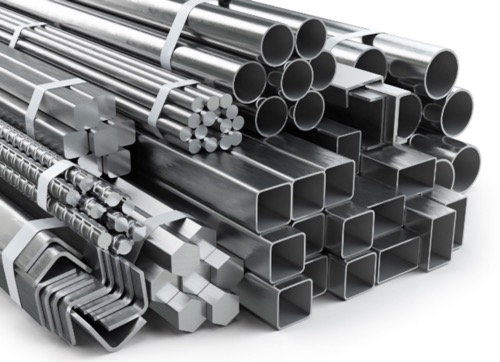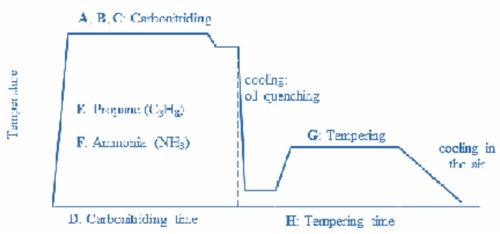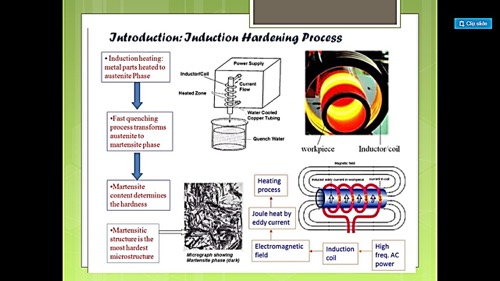15 Methods for Stainless Steel Heat Treatment | Beginners Guide
 Feb 11,2024
Feb 11,2024

Introducing to the world of stainless-steel heat treatment- renowned process that critically reveals different properties of this well-known material whether its physical, chemical, or mechanical. Stainless steel is a material that is mainly categorized from other steel types based on its corrosion resistance and strength. When this material goes under specific heat treatment processes, the results are altered in the form of enhanced mechanical as well as metallurgical characteristics. In this article, different methods for heat treating stainless steel are discussed briefly along with various benefits and applications.
Stainless steel has a variety of applications in different aspects whether it is aerospace, automative, construction or even in the field of medicine. Heat treatment plays a crucial role in altering its properties especially when it must meet a specific requirement for the desired application. So, despite you are belonging to any profession that has direct or indirect relation with metallurgy, this article will surely provide you a basic understanding of stainless-steel heat treatment and will help you in developing a foundation particularly on the way while choosing a specific method for the application.

Fig 1: Stainless Steel
Below is the table that will provide you an idea regarding the methods applicable for different grades of stainless steel:
Table 1: Comparison of Common Stainless-Steel Grades and Their Heat Treatment Methods
|
Heat Treatment Methods |
Stainless steel grade 440c |
Stainless steel grade 416 |
Stainless steel grade 420 |
Stainless steel grade 410 |
Stainless steel grade 304 |
Stainless steel grade 17-4ph |
|
Annealing |
✔️ |
✔️ |
✔️ |
✔️ |
✔️ |
❌ |
|
Quenching |
✔️ |
✔️ |
✔️ |
✔️ |
❌ |
✔️ |
|
Tempering |
✔️ |
✔️ |
✔️ |
✔️ |
✔️ |
✔️ |
|
Normalizing |
❌ |
❌ |
✔️ |
❌ |
❌ |
❌ |
|
Aging |
❌ |
❌ |
❌ |
❌ |
✔️ |
❌ |
|
Stress Relieving |
❌ |
❌ |
❌ |
✔️ |
❌ |
❌ |
|
Case Hardening |
❌ |
✔️ |
❌ |
✔️ |
❌ |
❌ |
|
Solution Treatment |
❌ |
❌ |
❌ |
❌ |
✔️ |
❌ |
|
Precipitation Hardening |
❌ |
❌ |
❌ |
❌ |
❌ |
✔️ |
|
Carburizing |
❌ |
❌ |
✔️ |
❌ |
❌ |
❌ |
|
Nitriding |
❌ |
❌ |
❌ |
❌ |
✔️ |
❌ |
|
Carbonitriding |
❌ |
❌ |
❌ |
❌ |
❌ |
❌ |
|
Cryogenic Treatment |
❌ |
❌ |
❌ |
❌ |
❌ |
❌ |
|
Induction Hardening |
❌ |
❌ |
❌ |
❌ |
❌ |
❌ |
|
Thermochemical treatment |
❌ |
❌ |
❌ |
❌ |
❌ |
❌ |
Annealing
A process of heat-treating stainless steel in which the specimen is heated to a specific temperature and cooled in a very controlled manner. In this treatment, slow cooling is done mainly inside the furnace. As a result, a refined grain structure is obtained meeting the desired properties for the application. Consider the example of 440c stainless steel in which annealing temperature ranges between 800-900℃. The range is carefully chosen for optimal properties. This process helps in relieving internal stresses, improves ductility and softens the steel. In addition to this, a balanced and uniform combination of strength and malleability is achieved that makes this steel more favorable for various applications. Precise annealing plays a vital role in modifying stainless steel to meet manufacturing and industrial requirements.
For further information, click on the link given below:
Quenching
A process that involves a sudden or rapid cooling of stainless steel especially to increase the hardness of the material. Upon cooling, martensitic structure is obtained i.e., needle like structure when observed under optical microscope. The quenching medium is usually oil or water and the resulting specimen obtained after quenching is hard and brittle. In the case of 17-4ph stainless steel, the process starts by heating the material at around 980°C, followed by rapid cooling. The cooling rate is carefully calibrated, often involving oil or water which induces a rapid transformation, enhancing hardness as well as crystalline structure. This ensures the formation of martensite, imparting the stainless steel with desired strength and hardness.
Tempering
This process is done after quenching the specimen in order to reduce the brittleness of the specimen. This step involves the reheating of stainless steel at a specific temperature followed by controlled cooling. The main agenda behind this is to maintain the hardness of the specimen and reduce the brittleness. This process is vital for stainless steel grades 416 to ensure a balance between hardness and toughness. The quenched specimen is reheated typically between 550°C and 600°C retaining the hardness while reducing the brittleness. Exceeding this range may compromise the specimen hardness. Applications where both strength and toughness are utmost desired, this step i.e., tempering plays a major role.
To elaborate further, visit the following link:
https://youtu.be/_iqV7e1-BFY?si=rb5218nhKgn5xGIN
Normalizing
A heat-treating process in which stainless steel is heated to a temperature above its critical range and then air cooling is done by bringing the specimen outside the furnace which is different in case of annealing. The soaking time is the same for both annealing as well as normalizing. The only difference lies in the cooling rate which alters the microstructure in both the processes. A coarse grain structure is obtained in this case. For example, to optimize the structure of 420 stainless steel, the material is heated between 870°C to 900°C, followed by controlled air cooling resulting in enhanced mechanical properties and machinability.
Aging
Aging is another name for precipitation hardening which involves heating stainless steel at a lower temperature for an extended period. The process leads to the formation of fine particles within the steel, promoting hardness and strength. It is a critical step while heat treating 304 stainless steels, contributing to enhanced mechanical properties. Below is the table showing the temperature range for aging different stainless-steel grade: [7]
Table 2: Stainless-steel grade with their aging temperature range:
|
Stainless Steel Grade |
Aging Temperature (℃) |
|
304 |
480-620 |
|
316 |
480-620 |
|
410 |
595-675 |
|
416 |
595-675 |
|
420 |
595-675 |
|
17-4ph |
480-620 |
|
440c |
480-620 |
Stress Relieving
The process is used to minimize residual stresses without any significant change in its material properties. The components which are to be welded or machined undergo this process first for the best results. Secondly, this heat treatment process after relieving stress improves dimension stability and minimizes distortion. 410 stainless steels, when subjected to temperatures typically ranging from 600°C to 700°C, followed by a controlled cooling process reduces residual stresses accumulated during prior manufacturing processes without significantly altering material properties. Deviation from these precise conditions risks inadequate stress relief.
Case Hardening
There are many industrial applications that involve a hardware-resistant surface known as the case along with soft and tough core. There are numerous methods or processes which can lead to case hardening of any metal, but the principal methods of surface hardening are as follow:
1. Carburization
2. Nitriding
3. Carbonitriding or cyaniding
4. Induction hardening
5. Flame Hardening
The first three methods involve the change in the chemical composition while the last two methods do not require the change in the chemical composition; rather, they are shallow hardening methods.
This link will provide a brief explanation on each type of case hardening:
https://youtu.be/K2mpVqY7nRQ?si=LQt9x6jUHVe97FcT
Solution Treatment
Solution treatment is a process of heat treating the specimen that employs creating a homogenized microstructure in stainless steel. Th process removes the inconsistencies in the microstructure while improving overall properties. This process is usually applicable on austenitic stainless steels like 304. [9]
Heating the material to temperatures between 1010°C to 1120°C ensures the homogenization of the microstructure and eliminating inconsistencies. The steel is then rapidly cooled, and one thing that should be kept in mind is that deviating from these precise conditions risks variations in mechanical properties. Solution treatment is vital for applications that demand strength and reliability.
Precipitation Hardening
Precipitation hardening is another heat treatment method that is responsible for increasing the strength of stainless steel through the precipitation of fine particles within the material. This method is applicable to 17-4ph stainless steel, where controlled precipitation is required to ensure superior mechanical properties. For this purpose, the material undergoes aging at temperatures between 480°C to 620°C. Hence, facilitates the formation of fine particles within the steel, enhancing strength. These temperature conditions are dominant, as they dictate the rate and degree of precipitation. Deviating from the temperatures compromises the alloy's properties, especially mechanical.
Carburizing
This is one of the oldest as well as the cheapest methods of surface hardening. Mostly, 0.20% carbon or lower is placed in an atmosphere that contains a significant amount of (CO)carbon monoxide. The temperature for carburizing is usually 1700℉. The following reaction take place at this temperature:
Fe + 2CO → Fe (c) + CO2
Where Fe(c) is the carbon dissolving in austenite region. The maximum C% that could dissolve at 1700℉ is indicated on iron carbide diagram at the ACM line. Hence there is an immediate surface layer of high carbon content i.e., about 1.2% is developed. Since the core comprises of low carbon content therefore the carbon atoms trying to reach equilibrium will start to diffuse inward.
Nitriding
The process of hardening in an environment of ammonia gas. The effectiveness of this process is associated with nitride formation in the steel by reaction between nitrogen and certain alloying elements. Although all steels can form iron nitrides at suitable temperatures and specific atmosphere, but the better results are found with steels comprising major nitride formers i.e., aluminum, chromium etc. The nitrogen should be in nascent or atomic form because molecular nitrogen wouldn’t react.
Carbonitriding
A process of surface hardening in which the steel is heated in a presence of gas atmosphere containing such composition of nitrogen and carbon that they are absorbed at the same time. The process is recognized as dry cyaniding, gas cyaniding etc. Generally, a mixture of enriching gas, carrier gas and ammonia are used as an atmosphere for carbonitriding. The mixture of nitrogen, carbon monoxide and hydrogen used as a carrier gas that is produced in a generator(endothermic) as in gas carburizing.

Fig 2: Time temperature curve for carbonitriding
Induction Hardening
This is the other method that involves shallow hardening of the steel. The metal part is induction heated and then quenched in this type of case hardening. So, to increase the hardness and brittleness of the part, the quenched metal endures a martensitic transformation. Without affecting the properties, this method is used to harden areas of a part or assembly selectively.

Fig 3: Induction hardening Process.
The table shows the impact of comparison of advanced Heat Treatment Methods:
Table 3: Comparison of Advanced Heat Treatment Methods
|
Heat Treatment Method |
Description |
Application |
|
Low Pressure Carburizing |
At low pressure, inclusion of carbon into the steel for enhanced hardness. |
Gears, bearings |
|
Solution Treatment |
Homogenizes the stainless-steel microstructure for improved properties. |
Austenitic stainless steels like 304. |
|
Precipitation Hardening |
Fine particles are formed within the steel to increase strength. |
High-strength applications, especially aerospace components. |
|
Cryogenic Treatment |
Stainless steel is cooled to very low temperatures to increase wear resistance as well as dimensional stability. |
Aerospace and high-performance applications. |
|
Induction Hardening |
localized areas are heated rapidly prior to quenching for better surface hardness. |
Automotive components like gears and shafts. |
|
Thermochemical Treatment |
Chemicals are diffused into the surface at elevated temperatures for enhanced wear and corrosion resistance. |
Components subjected to harsh and aggressive environments. |
Following are the furnaces used for heat treatment purpose:
|
Furnace Type |
Maximum Temperature |
Heating Rate |
Cooling Rate |
|
Resistance Furnace |
1200°C |
10°C/min |
5°C/min |
|
Induction Furnace |
1500°C |
Variable |
Variable |
|
Vacuum Furnace |
2000°C |
20°C/min |
10°C/min |
|
Annealing Oven |
600°C |
5°C/min |
2°C/min |
|
Tempering Furnace |
800°C |
15°C/min |
8°C/min |
|
Continuous Belt Furnace |
1000°C |
Variable |
Variable |
Phase Change and Microstructural Analysis
Heat treatment directly affects the phase changes in stainless steel having a strong influence on its microstructure. Austenitic to martensitic transformations, grain growth, and the development of martensite or austenite plays a vital role in determining the material's final properties. Microstructural analysis is essential for assessing the effectiveness of the heat treatment process and ensures the achievement of heat treatment, inspecting the crystalline arrangement.
The table illustrates the impact of carbon and nitrogen content on stainless steel properties:
Table 5: Impact of Carbon and Nitrogen Content on Stainless Steel Properties [16]
|
Stainless Steel Grade |
Carbon Content (%) |
Nitrogen Content (%) |
Effect on Properties |
|
440c |
High |
Low |
Better hardness and wear resistance but decreased corrosion resistance. |
|
416 |
Medium |
Low |
Enhanced machinability as well as corrosion resistance. |
|
420 |
Medium-High |
Low |
Improved hardness and wear resistance. |
|
410 |
Medium-High |
Low |
Balance combination of hardness and corrosion resistance. |
|
304 |
Low |
Medium |
Exceptional corrosion resistance and formability. |
|
17-4ph |
Low |
Medium |
High strength plus corrosion resistance with precipitation hardening. |
Below link further illustrates on carbon and nitrogen content on stainless steel:
Conclusion
The heat treatment process influences the material's mechanical and metallurgical properties. The methods discussed in this article offer a clear overview of the approaches employed to tailor stainless steel to specific applications. Each method plays a unique role in enhancing hardness, strength, and corrosion resistance. Understanding these methods provides a solid foundation for working with stainless steel. Whether you're involved in manufacturing, research, or simply curious about the science behind stainless steel, this article will serve as a valuable resource on the art and science of stainless-steel heat treatment.
FAQ
What happens to stainless steel when heated?
It expands on heating while retaining its strength and corrosion resistance at high temperatures due to its unique composition.
440c VS 416 stainless steel heat treatment
For superior hardness and wear resistance we usually heat-treat 440C stainless steel. On the other hand, 416 stainless steel is heat-treated for improved machinability and
 Tel/WeChat:
Tel/WeChat:  Email:
Email: 
 Home
Home
 Techniques of Annealing Aluminum: Best Beginner Guide 2025
Techniques of Annealing Aluminum: Best Beginner Guide 2025 







